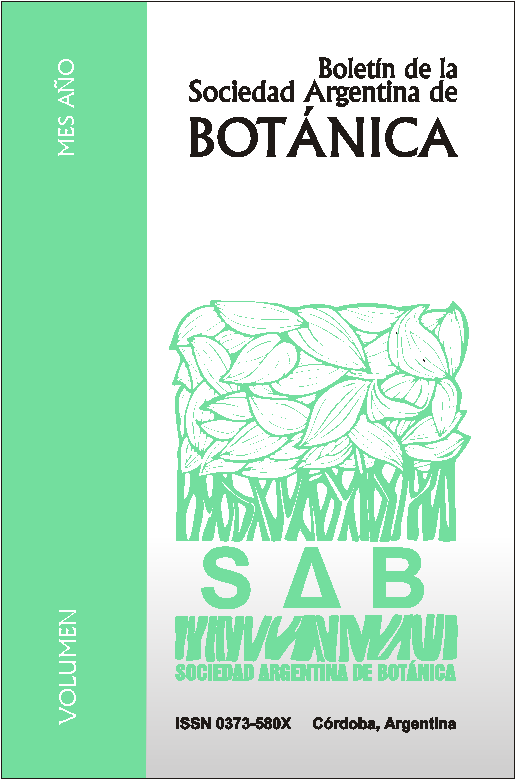The mosses (Bryophyta) of Polylepis sericea (Rosaceae) forests from Mérida state (Venezuela)
DOI:
https://doi.org/10.31055/1851.2372.v52.n2.17445Keywords:
Bryophyta, forest, mosses, Paramo, Polylepis sericea, Venezuela.Abstract
The mosses (Bryophyta) of Polylepis sericea (Rosaceae) forests from Mérida state (Venezuela). Herein, we publish a list of 90 species of mosses associated with Polylepis sericea forests in Mérida, Venezuela. The Leucobryaceae family is the most diverse with 14 species followed by Bryaceae, Bartramiaceae and Pottiaceae. The most diverse genera are Campylopus (14 species), Leptodontium (5), Breutelia (4), Bryum (4), Zygodon (4) and Racomitrium (3). In these forests the acrocarpic mosses are dominant: represented by 68 species, of which tall turfs are the most frequent (41.11%), followed by short turfs (24.44%) and extensive mats (8.89%). The phytogeographic analysis shows a predominance of neotropical elements (36%), over worldwide distributed elements (27%). Thirty-nine species are exclusive to Sierra Nevada of Mérida and 34 to Sierra de la Culata. Only 19% of the species is shared by both Sierras, indicating that there is high beta diversity in the studied forests. In Venezuela the bryoflora of Polylepis forests is more similar to the Bolivian forests. The species Drepanocladus sordidus (Amblystegiaceae), Myurella sibirica (Plagiotheciaceae) and Pleurochaete luteola (Pottiaceae) are added to Venezuelan moss flora, as well as nine new records for the bryoflora of the Mérida state.
Downloads
Published
Issue
Section
License
Provides immediate and free OPEN ACCESS to its content under the principle of making research freely available to the public, which fosters a greater exchange of global knowledge, allowing authors to maintain their copyright without restrictions.
Material published in Bol. Soc. Argent. Bot. is distributed under a Creative Commons Attribution-NonCommercial-ShareAlike 4.0 International license.





